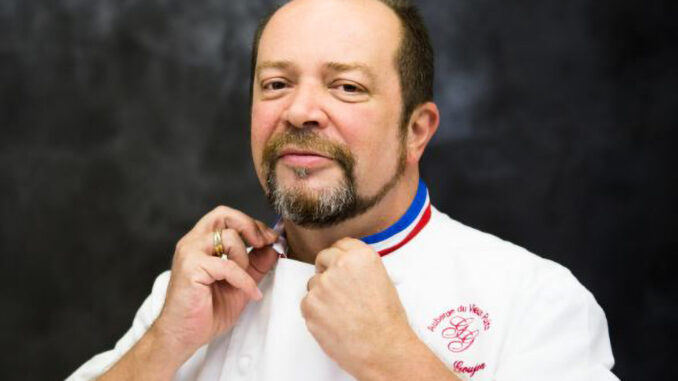
In an exclusive interview with Zenger News, Gilles Goujon, the French eatery’s owner and three-Michelin star chef, dished on a variety of topics, including:
* The story behind the creation of such signature Guojon dishes as his truffled egg infusion;
* How he took an unassuming provincial inn out of bankruptcy and turned it into a household name on the international gourmet scene;
* His creation of a seed-containing menu that patrons can plant at home;
* How his ambition to be a great chef unexpectedly mirrored that of his father, who was forbidden by his family from pursuing a culinary career.
All those efforts culminated in Goujon’s restaurant being named Tripadvisor’s “2020 Travelers’ Choice Award” as the world’s best fine-dining destination.
The annual awards are based not on expert opinions, but on the feedback from thousands of diners. With the honor, Auberge du Vieux Puits follows in the footsteps of a long list of world-renowned restaurants, such as The Black Swan at Oldstead in the U.K., which was named best restaurant in the U.K. this year, and the French Laundry in Yountville, California, which took the top spot for best fine-dining restaurant in the United States.
NICE GUYS FINISH FIRST
The Auberge du Vieux Puits, the “Old Well Inn” in English, is named after a 7-foot-wide well in Fontjoncouse, a small village in southern France, near the Spanish border. Asked why he thinks the restaurant won this year’s top prize, the 58-year old Goujon, without skipping a beat, replied with a chuckle: “Because I’m a nice guy!”
Having come from the kitchen for the interview, he was still wearing his chef’s uniform—which displays the date 2010, the year he received his first Michelin star—and he conceded that he thought it was a prank when he was first told of the award. “I was very happy, of course. And surprised,” he said.
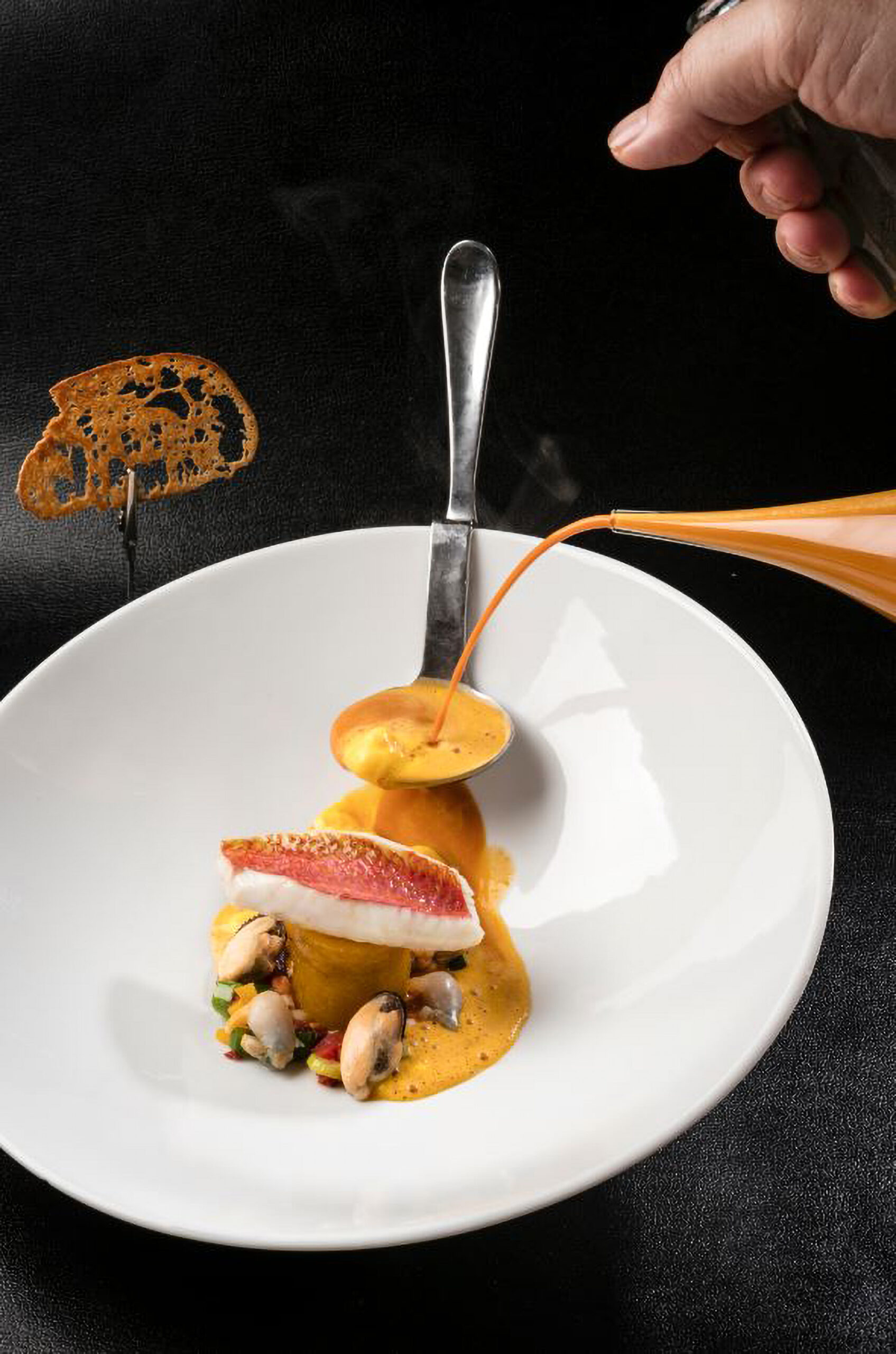
Goujon considers the award recognition for all the “hard work undertaken by our whole team for years, right down to how to welcome potential customers on the phone. Each reservation takes at least five minutes to make.
“We ask lots of questions, where they are from, if they need directions, what allergies they might have, if there is any food they do not like. It’s all about customizing our welcome.
“When the customers arrive, we welcome them like friends. I really have a great, enthusiastic team by my side, who have followed me for years.”
He said that the staff has not let having three Michelin stars go to their head, and that they always strive to add a little humor and empathy to conversations. “We pay special attention to kindness and to how we welcome people.”
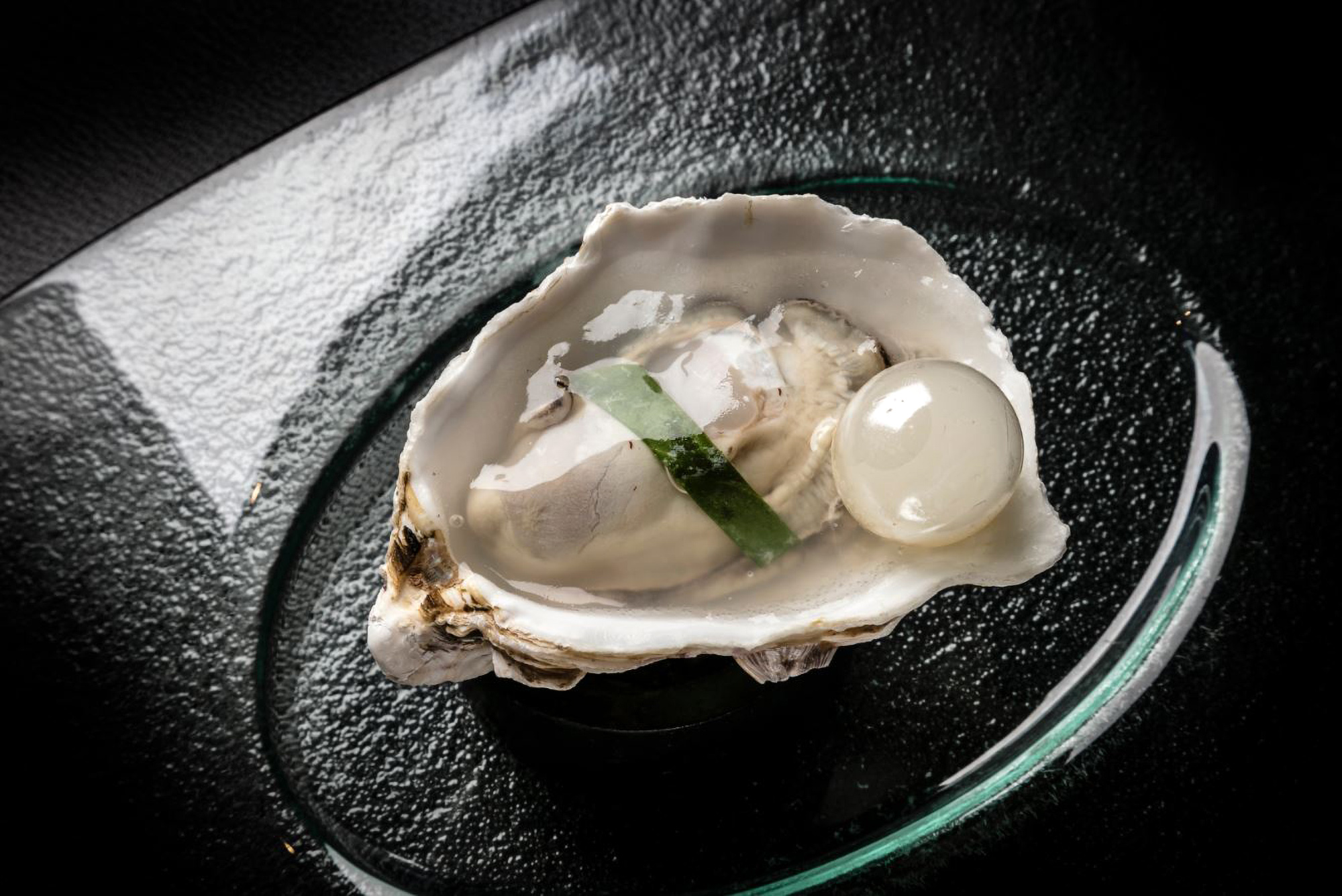
(Auberge du Vieux Puits/Newsflash)
“I think that is why we won this award. When you look at the comments, people are always very positive about their overall experience here,” he said, referring to users’ comments on Tripadvisor.
HELPING DINERS FEEL SAFE
When asked about steps his restaurant has taken in the face of the Covid-19 pandemic, Goujon chuckled and lifted his right arm, displaying a face mask dangling from his wrist.
“Everyone in the kitchens have these. We also have sanitizing hand-gel dispensers on the walls at all key locations on the premises. I even have an ozone water tap with which I wash the vegetables.”
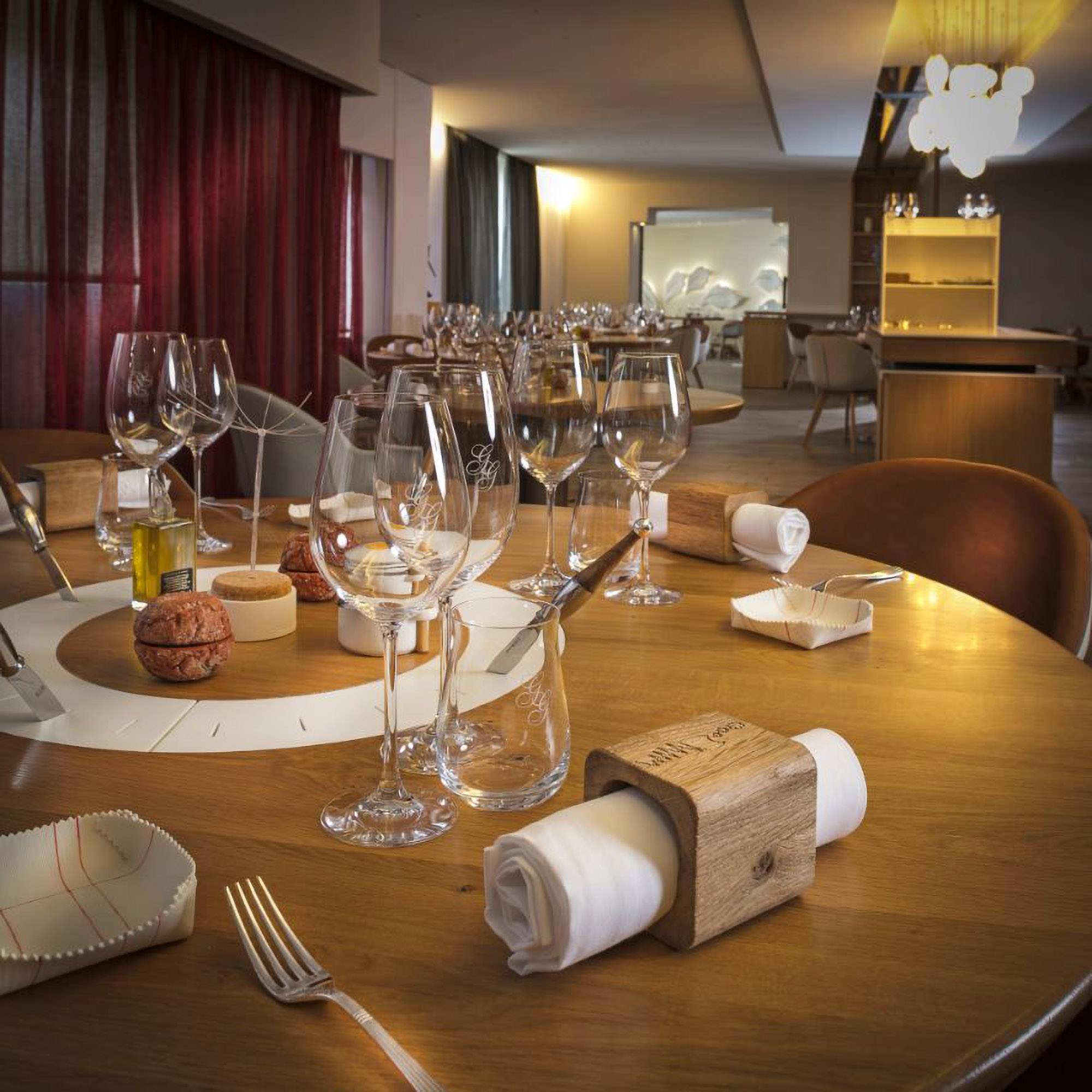
Other steps include placing ozone generators to refresh the air inside the restaurant, and what Goujon described as “a machine like you would find at a dry cleaner, to wrap things up and seal them. That way, the dressing gowns, the sponges, and items such as that, are wrapped up and come out of the laundry room that way.”
He added: “Everything is done so that the customers feel safe, so that our staff feel safe, and with a good atmosphere. We don’t want it to be something that scares people. Customers wear masks when they go to the restroom, but take them off when seated at their tables. They also have sanitizing hand gel on the table, we have sanitizing hand wipes, too.”
Goujon also has his staff undergo a Covid-19-prevention training course. “A company came, and we all took part. They went over all the procedures regarding how to act and how to behave. We went back to the basics of hygiene, in addition to the new behaviors.”
A SHORT (AND PLANTABLE) MENU
Beyond such operational steps, Goujon said the pandemic has caused him to simplify his menu by limiting the number of dishes on it. Speaking of which, the chef says “we also created something completely new with menu: it’s a take-away one that people can plant.”
The menus in question appear to be punctured with numerous tiny holes. These are, in fact, seeds. “All the customer has to do is place this sheet of paper in the ground and water it, and they will be able to grow their own carrots, for example,” Goujon said.
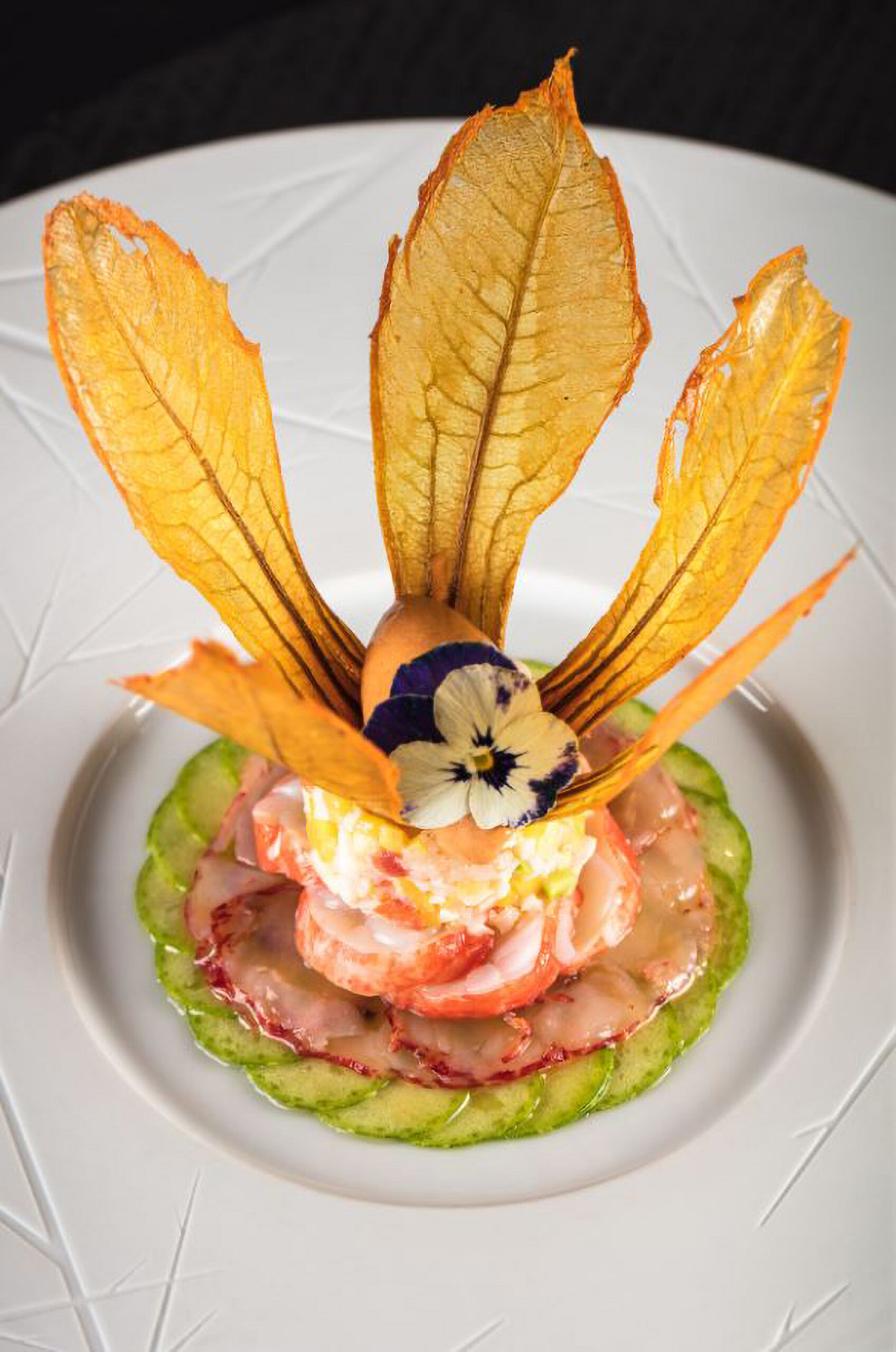
As for the dishes offered on the menus, Goujon said that while there are indeed fewer than during normal times, he still offers signature dishes that he prepares on demand, including his most-famous creations.
One of these is a red mullet fillet, which comes with bonne bouche potatoes stuffed with a bullinada spring onion brandade, coated in a saffron foam.
Another signature dish by the illustrious chef is a melanosporum truffle rotten carrus egg, on a puree of mushrooms and truffles, warm briochine and cappuccino to drink. Goujon explained that the ideal cooking temperature for an egg is 65 degrees Celsius (149 degrees Fahrenheit).
This, he said, was fortunate, because the ideal temperature at which a truffle releases its flavors is also 65 degrees. He said that the key to cooking eggs, especially scrambled eggs, is to do it very slowly.
That’s why the so-called rotten egg has only has a very thin layer of white and when one plunges one’s knife and fork into it, the black truffle fused with the yolk oozes out of it, he said.
Goujon also said he tries to source as many ingredients as possible locally for his dishes, which each cost around 80 euros (about $95 U.S.). As the restaurant is located near the Mediterranean coast, the chef can create dishes that include fresh tuna, turbot, amberjack and other fish.
PAYING HIS DUES
Like many who forge to the heads of their respective fields, passion is an essential motivator for Goujon. “For me, this is not a job, it is a passion. More than that, it’s [almost like] an illness! It’s true!
“I often say, when I go into the kitchen, I’m like a gambling addict on a slot machine in a casino. I know what time I went in, but I lose track once inside and don’t know what time it is when I comes back out.”
He added: “I don’t really know how to do anything else. When I’m not cooking, I am miserable and feel like something is missing.”
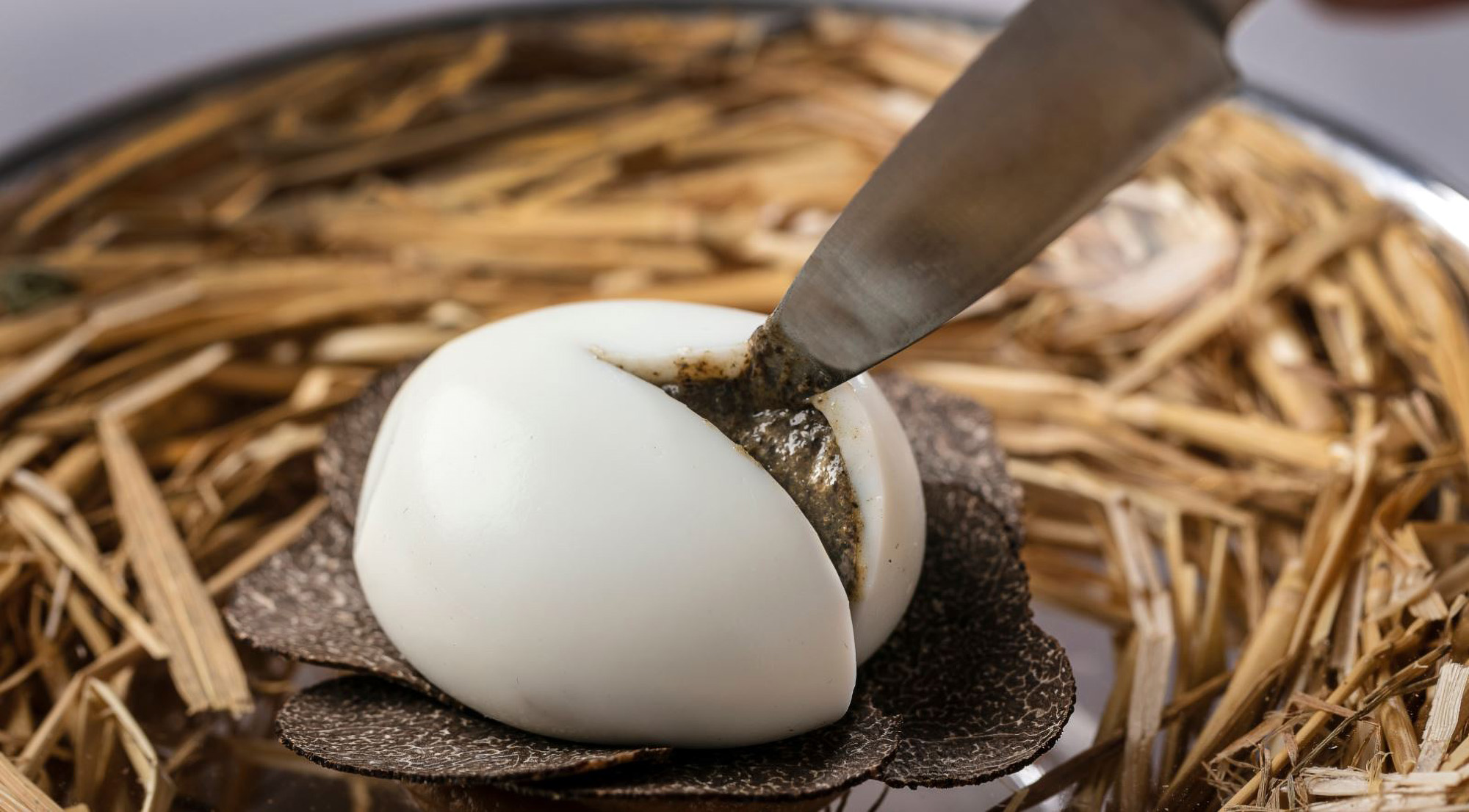
(Auberge du Vieux Puits/Newsflash)
You don’t become one of the world’s most renowned chefs without paying some major dues along the way. For Goujon, his run at stardom began at age 20, when he told his then-fiancée and now-wife, “You love me, I love you, it’s wonderful. But there is one thing you have to know. For me, there is only: cooking, cooking, cooking, and cooking!”
As Goujon made this statement, Marie-Christine, his wife, briefly appeared in the room and waved.
“I told her, the next 10 years are going to be tough, no relationship, no children; I want us to work together to have two coins to rub together, because we didn’t have any money. I want to be my own boss by the time I’m 30. I want to be the best in France, and I want to have three Michelin stars,” he said.
For all those stated ambitions, he notes, “I didn’t tell her I wanted to be the best in the world. That is something I didn’t know! She said, ‘Let me think about it,’ and then ‘OK’. And that’s how it all started.”
Ten years later, the couple arrived at Fontjoncouse. “I was 30, and I wanted to be my own boss – but we didn’t have any money.” That meant they looked for a bankrupt business to buy on the cheap. That, in turn, lead to Auberge du Vieux Puits, which had gone bankrupt three times.
“Because I am superstitious, I knew that bad things happened in threes. So I said to myself that there was no problem and that we could go for it. But it was really hard.
“When we got here, there was a well, but it was all covered up. Marie-Christine said it would be good if we uncovered it. She was right; it’s an extraordinary well. It’s 2 meters wide, right in the middle of the salon. We covered it with glass and people can walk on it. It’s magnificent!”
After years of hard work, Goujon said he was finally awarded his first Michelin star in 2010. Since then he has been awarded two more.
OVERCOMING EARLY STRUGGLES
As to why he wanted to become a chef in the first place, he begins by noting he was only a so-so student. “So I was very young when I told my mother I wanted to stop school and become an apprentice chef.” She was less than thrilled.
“In my family, everyone had finished high school, and here I was decreeing that I wanted to quit after middle school and wasn’t interested in going to high school.
“I lost my father when I was 10. I was raised and educated by my mother. I had two sisters, so she found herself on her own raising three children. My mother, instead of saying ‘no way!’, and so as to avoid any family disputes, told me that if that was really what I wanted to do, then I should go to the job center and go through the postings there.”
Goujon did just that and came upon three ads that interested him them. He surreptitiously pocketed them before leaving. Once home, he told his mother about the openings, and she replied, ‘OK, make an appointment.’”
Goujon says that he protested, telling her that age 15, he didn’t know how to go about doing that. His mother wasn’t convinced, telling him that if he really wanted to become a chef, he first had to learn how to present himself. Then, she basically left him to figure things out on his own.
He did, making the necessary calls, going to job interviews in a suit and tie, and finally landing a job as a waiter. Next, he went to work for a railway company as an apprentice in a train station restaurant in the city of Beziers. He was subsequently named best apprentice in the region.
It was on the way home from the awards ceremony for that honor that Guojon’s mother told him that his father — a fighter pilot in the French Air Force who died at the age of 37—had also aspired to become a chef, but was stopped by his parents from pursuing that goal.
“I told myself, this is great! I was already doing what my father had always wanted to do and I hadn’t even known that. It was like wings sprouted out of my back. I don’t know how to explain it.”
Goujon’s own aspirations got a major boost in 1983, when he found a mentor in famous French chef Roger Verge, a three-Michelin-star chef of international renown. Goujon became an assistant chef at Verge’s restaurant, the Moulin de Mougins.
Within a few months, he was placed in charge of the restaurant’s fish department. Then, in 1987, he moved to Marseille and worked at Le Petit Nice, a restaurant run by two-Michelin-star chef Jean-Paul Passedat.
In 1989, he became the sous chef of Gerard Clor at the one-starred restaurant L’Escale in Carry-le-Rouet, where he worked for three years, helping the restaurant earn its second star. Finally, in 1992, he moved to Fontjoncouse and began making the moves that would turn the bankrupt Auberge du Vieux Puits into a major player in global fine-dining scene.
Indeed, the Guojon’s creation is in some very exclusive company: Of the estimated 15 million restaurants worldwide, only 137 currently have three Michelin stars.
(Edited by Matthew Hall and Allison Elyse Gualtieri.)
The post Secrets of a superstar chef appeared first on Zenger News.
